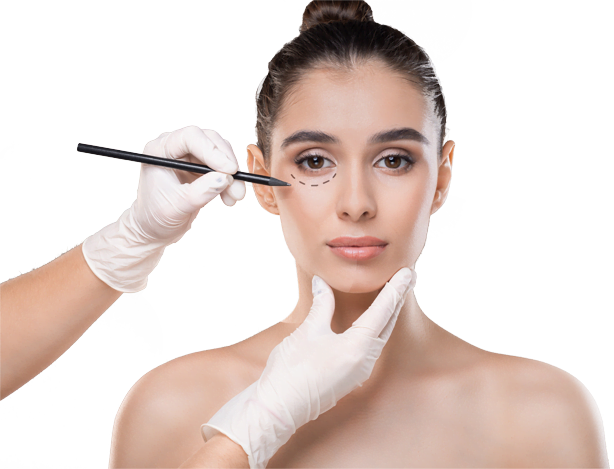Table of Contents
1. Introduction: Understanding Forehead Reduction and Hairline Lowering
The forehead plays a crucial role in the overall aesthetics of the face. For some individuals, a high or excessively large forehead can create a disproportionate appearance, affecting their self-confidence. In such cases, forehead reduction and hairline lowering procedures can help achieve facial harmony by bringing the hairline forward and reducing the forehead’s size. This article will explore the details of forehead reduction and hairline lowering, the benefits they offer, and what to expect throughout the process.
2. Factors Contributing to an Imbalanced Forehead
An imbalanced forehead can be influenced by various factors, including genetics, natural aging, hair loss, and certain medical conditions. Some individuals are born with a naturally high hairline, while others may experience hairline recession over time. Additionally, people with certain conditions such as frontal bossing (protrusion of the forehead) may seek forehead reduction for both cosmetic and functional reasons.
3. The Procedure: What to Expect from Forehead Reduction and Hairline Lowering
Forehead reduction and hairline lowering procedures involve carefully planned surgical techniques to achieve the desired results. During the initial consultation with a qualified plastic surgeon, they will evaluate your facial features, discuss your goals, and determine the most appropriate approach for your individual case.
The surgery typically begins with the administration of anesthesia to ensure your comfort throughout the procedure. The surgeon will then make precise incisions along the hairline, carefully repositioning and reducing the forehead as required. Depending on the extent of the correction needed, the surgeon may also perform hair grafting to create a natural-looking hairline.
4. Benefits of Forehead Reduction and Hairline Lowering
Forehead reduction and hairline lowering procedures offer numerous benefits to individuals seeking facial enhancement. Some of the key advantages include:
4.1 Enhanced Facial Proportions
By lowering the hairline and reducing the size of the forehead, these procedures can enhance facial proportions, creating a more balanced and harmonious appearance. This can greatly improve self-esteem and confidence in one’s overall facial aesthetics.
4.2 Youthful and Refreshed Look
Forehead reduction and hairline lowering can help achieve a more youthful and refreshed look. By addressing the signs of aging, hairline recession, and high forehead, these procedures can contribute to a more rejuvenated facial appearance.
4.3 Versatile Treatment Options
The surgical techniques used in forehead reduction and hairline lowering are highly customizable. This allows the surgeon to tailor the procedure according to each patient’s specific needs and desired outcomes, ensuring optimal results.
5. Preparing for the Surgery: Consultation and Decision-making Process
Before undergoing forehead reduction and hairline lowering, it is essential to schedule a comprehensive consultation with a board-certified plastic surgeon experienced in these procedures. During the consultation, the surgeon will evaluate your medical history, discuss your aesthetic goals, and explain the surgical process in detail.
To make an informed decision, ask questions regarding the surgeon’s experience, the anticipated results, and the recovery process. It is crucial to have realistic expectations and a thorough understanding of the potential risks and benefits associated with the procedure.
6. The Surgical Process: Techniques and Recovery
Forehead reduction and hairline lowering surgeries are typically performed under general anesthesia in a hospital or surgical facility. The specific techniques employed will depend on factors such as the extent of correction needed, the patient’s anatomy, and the surgeon’s expertise.
Following the surgery, patients can expect a recovery period of several weeks. It is important to follow the surgeon’s post-operative instructions carefully to promote proper healing and minimize the risk of complications. Swelling, bruising, and mild discomfort are common during the initial stages of recovery, but these symptoms should gradually diminish over time.
7. Potential Risks and Complications
Like any surgical procedure, forehead reduction and hairline lowering carry some inherent risks. These may include infection, bleeding, scarring, asymmetry, and changes in sensation. However, by choosing a skilled and experienced surgeon and adhering to post-operative care instructions, the likelihood of complications can be significantly reduced.
8. Frequently Asked Questions (FAQs)
Q1. How long does the forehead reduction and hairline lowering procedure typically take? Q2. Will the surgery leave visible scars? Q3. Is forehead reduction and hairline lowering suitable for both men and women? Q4. Are the results of forehead reduction and hairline lowering permanent? Q5. What is the expected recovery time after the procedure?
9. Conclusion: Achieving Facial Harmony through Forehead Reduction and Hairline Lowering
Forehead reduction and hairline lowering procedures offer individuals with an imbalanced forehead the opportunity to enhance their facial proportions and achieve greater confidence. By understanding the surgical process, benefits, and potential risks associated with these procedures, individuals can make informed decisions and embark on a journey towards improved facial aesthetics. If you are considering forehead reduction and hairline lowering, consulting with a qualified plastic surgeon is the crucial first step towards achieving the desired results and boosting your self-image.

